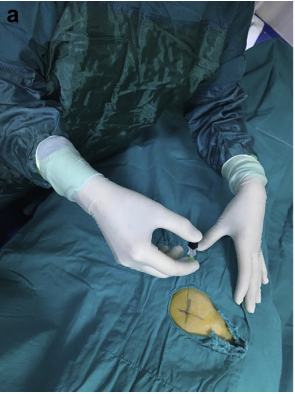Objective: The aim of this study was to investigate the efficacy and safety of Computed Tomography (CT) guided percutaneous Radiofrequency Ablation (RFA) in the treatment of osteoid osteoma (OO).
Methods: A total of 116 patients (82 male and 34 female patients; mean age of 17.7 years; age range 13- months-42 years) who had 118 CT guided RFA treatment between June 2015 and November 2018 (42 moths) with the diagnosis of OO were included in this study. All the patients had pre-procedural CT examinations. The clinical and technical success and the safety of the treatment were evaluated by assessing the clinical pain symptoms, complication rates and recovery of posture and gait.
Results: All the patients had a favorable immediate relief of the known pain caused by osteoid osteoma in 24 h after the procedure. Only in two patients (15-years-old boy with OO in right femoral neck and a 12 years old boy with OO in femur diaphysis) pain relapse was occurred in 3 months and 12 months after RFA and a second RFA was performed. During follow-up they had no pain. The technical success and efficacy-rates of the procedure were recorded as 100% and 98% respectively in this study. No significant complication was observed during treatment or recovery period. Seven minor complications were noted which were successfully treated.
Conclusion: The rapid relief of pain symptoms, low relapse rate and low complication rates demonstrate the efficacy and safety of RFA therapy. RFA is an out-patient procedure that patients can be mobilized immediately after the procedure. RFA can be safely used as a first choice of treatment method in OO therapy.
Level of evidence: Level IV, therapeutic study.



.png)
.png)

